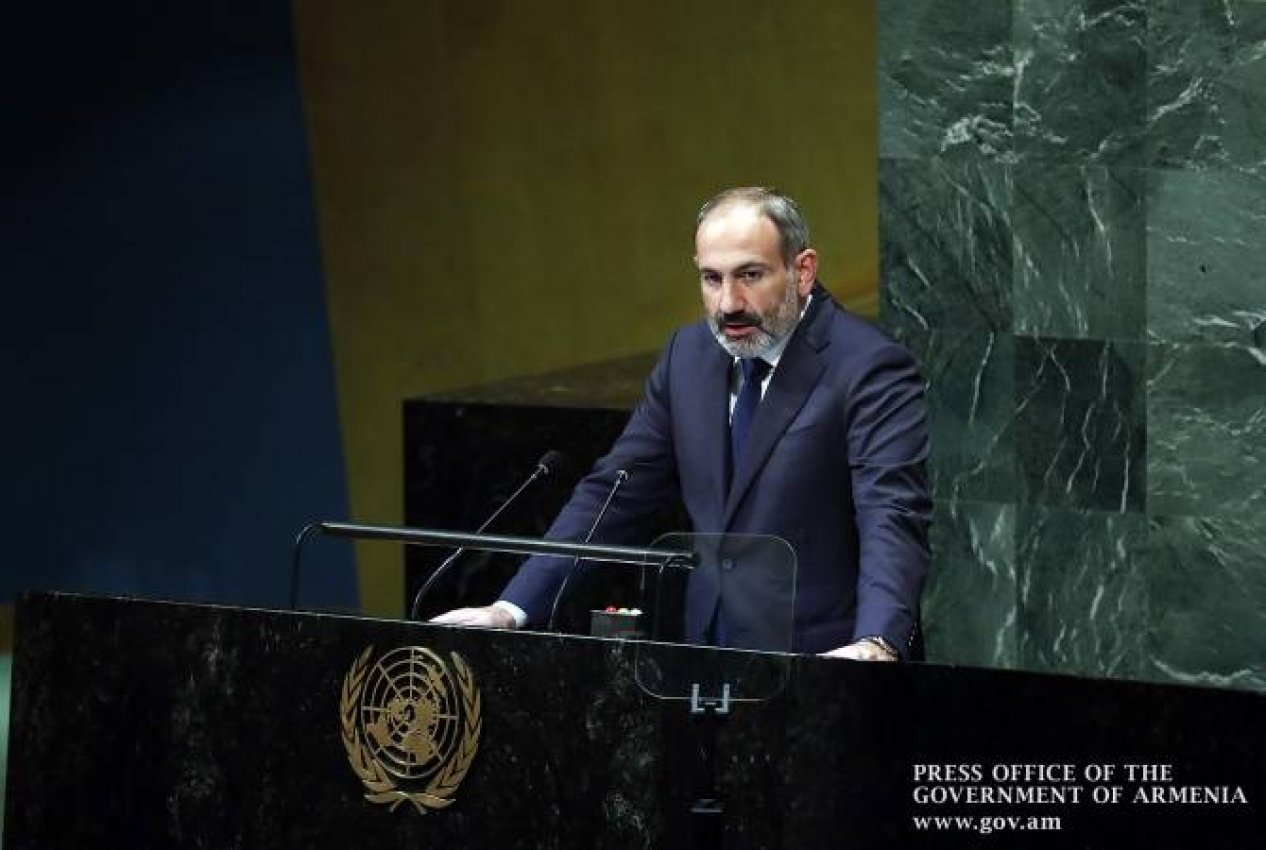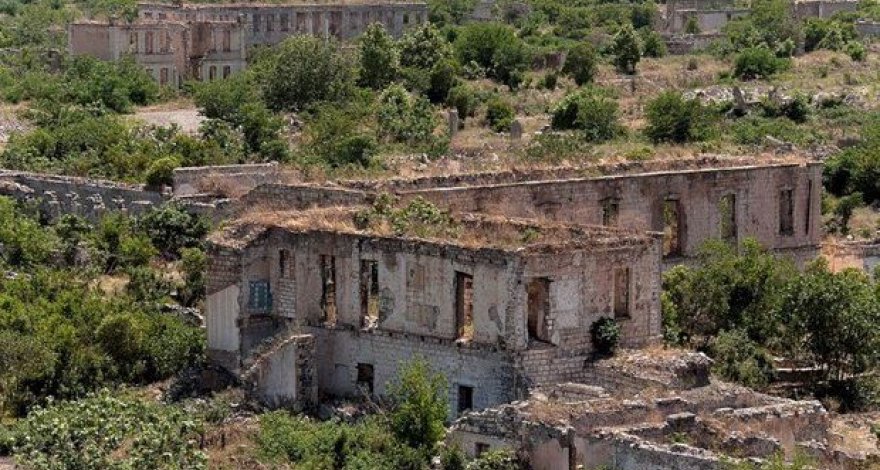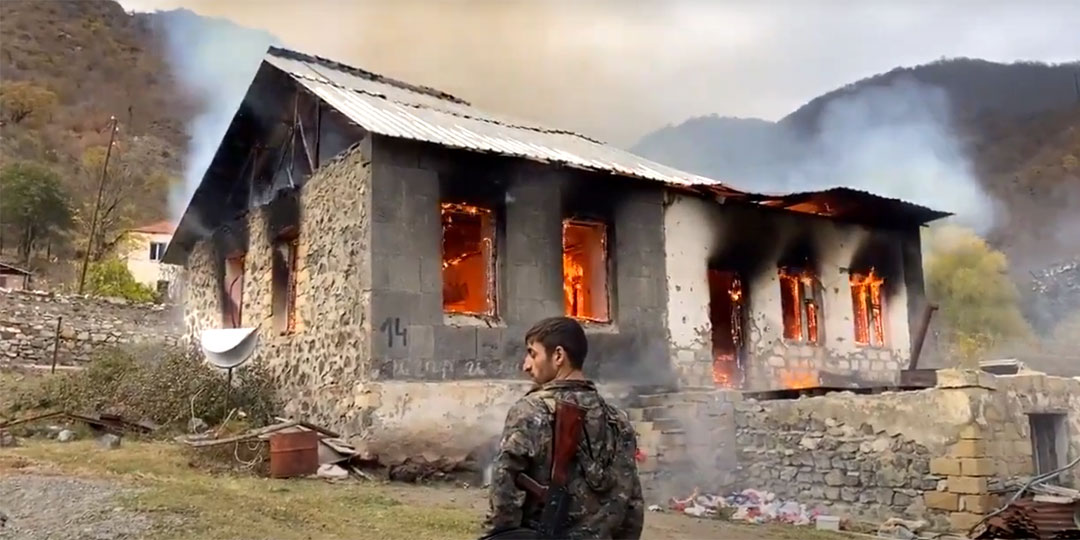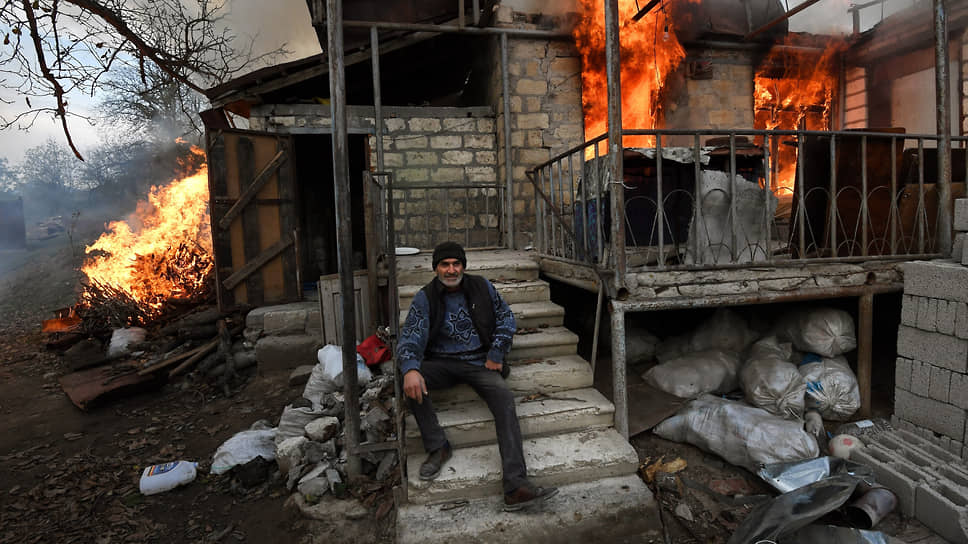
Armenian Prime Minister Nikol Pashinyan has recently delivered speech at the 76th session of the UN General Assembly, where, in particular, he stated that “The aggression was accompanied by numerous gross violations of international law by the Azerbaijani armed forces, including deliberate targeting of civilians and vital infrastructure...”
Pashinyan went on to say that “As a result of these actions, in the parts of Nagorno-Karabakh, which came under the control of Azerbaijan, the Armenian people were subjected to complete ethnic cleansing. Unfortunately, the international community here again could not prevent the mass atrocities. Today, no Armenian lives or practically could live in the territories under the control of Azerbaijan,” the prime minister said.
Faktyoxla Lab. has tried to figure out how plausible the statements of the Armenian prime minister are.
To begin with, it is not entirely clear what Pashinyan meant by “aggression by the Azerbaijani Armed Forces.” The fact is that the hostilities were taking place in the internationally recognized territories of Azerbaijan and no attacks were carried out on the territory of Armenia. As for his statements about “deliberate targeting of civilians and vital infrastructure,” Faktyoxla Lab. has already proved their unfoundedness.
As for Pashinyan’s statement that “Armenian people were subjected to complete ethnic cleansing in the parts of Nagorno-Karabakh, which came under the control of Azerbaijan,” let's start with the fact that, firstly, in the 90s of the last century, the Armenian armed forces occupied the following territories of Azerbaijan: Nagorno-Karabakh Autonomous Oblast, Lachin, Kalbajar, Aghdam, Fuzuli, Jabrayil, Gubadli, Zangilan districts.

According to the Ministry of Emergency Situations of Azerbaijan in 2015, the number of refugees, or rather internally displaced persons, from the occupied territories of the country was 789,000.
In Lachin region, before the occupation on May 18, 1992, there were 66,671 Azerbaijanis among the population of 69,087 people.
As a result of the Armenian occupation, all Azerbaijani citizens were deported, more than 300 military and civilians were killed and went missing. In the district, 8,950 buildings were seized, including 7 industrial and construction enterprises, 471 service points, 154 schools, hundreds of monuments of history and culture
In accordance with the tripartite statement of the presidents of Azerbaijan and Russia, as well as the prime minister of Armenia on November 9, 2020, the Lachin region came under the control of Azerbaijan on December 1 of the same year.
Kalbajar district was occupied on April 2, 1993 after several days of fighting. As a result of the occupation of Kalbajar, 511 civilians were killed by the Armenians, 321 people were captured or went missing, 58,000 people were expelled from their native lands. 130 settlements of Kalbajar came under the control of Armenia, including 97 schools, 9 kindergartens, 116 libraries, 43 clubs, 42 houses of culture, 9 hospitals, 13,000 private houses were destroyed, 37,852 hectares of forests, natural resources, including rich deposits of gold were plundered.

On November 20, according to a trilateral statement on Karabakh, the Aghdam region, which was partially occupied by the Armenian Armed Forces on July 23, 1993, returned under the control of Azerbaijan. Some 6,000 people were killed in battles with the enemy in Aghdam, of which 16 are National Heroes of Azerbaijan. As a result of the occupation, out of the 160,000 population of the region, 143,000 became internally displaced persons in their homeland. The Armenians captured 846.8 square kilometers, that is, 77.4 percent of the territory of the Agdam region, the total area of which is 1,094 square kilometers, turning this territory into ruins. Currently, about 90,000 people live on the territory of the district, and 101,000 people as forced migrants temporarily settled in 62 cities and regions of the country.
As a result of the capture of the Fuzuli region of Azerbaijan by the Armenians on August 23, 1993, some 55,000 people were forced to leave their homes.
In January 1994, the Azerbaijani army managed to liberate more than 12 settlements of the Fuzuli region from occupation in one day. Subsequently, about 50 percent of the district’s population lived on this territory.
As a result of the seizure of the neighboring Jabrayil region by the Armenians, 61 thousand people left it, 5 mosques, 2 museums, 129 historical monuments were destroyed. Azerbaijan liberated this area on October 7, 2020 during the Second Karabakh War.

The Gubadli district of Azerbaijan, a region with an area of 80,250 hectares, was occupied by Armenia on August 31, 1993. Before the occupation, according to the 1989 All-Union census, the population of the region was 28,110 people. Currently, the population of the district is about 38,000 people. The surviving residents of the district currently live in 47 regions of the country. During the defense of the region, 283 volunteers heroically died, seven of them were awarded the title of National Hero of Azerbaijan.
On October 20, 2020, Azerbaijani President Ilham Aliyev announced the liberation of Zangilan city and a number of villages of the district in his address to the nation.
As a result of the occupation of the district in 1993 by the Armenian armed forces, over 35,000 Azerbaijanis lost their homes and had to leave their native lands. During the seizure of Zangilan, 188 residents of the district were killed by the invaders, 44 people went missing, 110 became disabled, and about 200 children became orphans.
As for the NKAO, which was abolished in 1991 by the decision of the Supreme Council of the Republic of Azerbaijan, according to the 1989 census, 37,264 Azerbaijanis or 23% of the region's population lived in the Nagorno-Karabakh Autonomous Oblast. They still constituted the majority in the Shusha region (over 80%), as well as in other places of compact residence.
In general, according to the official data of the Azerbaijani side, as a result of the Armenian-Azerbaijani conflict, there are 1,138,450 refugees and internally displaced persons in the country. Of these, 350,000 are Azerbaijani refugees from Armenia.
In 1988-1993, as a result of the military aggression of the armed forces of Armenia, the number of internally displaced persons from Nagorno-Karabakh, as well as from the adjacent 7 regions, reached 788,950 people.
Thus, comparing statistical data, including the period of the USSR, we come to the conclusion that before the occupation of the territories of Azerbaijan in the early 90s by the Armed Forces of Armenia, about 700,000 ethnic Azerbaijanis lived in Karabakh, including its mountainous part, and also a certain number of ethnic minorities who also have the right to return to the lands of their ancestors, liberated as a result of the Second Karabakh War.
Secondly, a preliminary assessment of the damage caused to Azerbaijan as a result of the Armenian occupation was carried out in 2014. The working group, created by the decree of the Cabinet of Ministers of the Republic of Azerbaijan on February 26, 2014, calculated the damage caused by the occupation to the population and the state on the basis of international assessment standards.
According to a report published in 2015, as a result of the occupation of Azerbaijani lands, the population suffered $147.8 billion in damage, and $126.46 billion damage was inflicted to the state. The working group noted that in general, Azerbaijan suffered damage for $818.88 billion, including damage to natural resources, material heritage and other spheres. The results of a comprehensive forensic examination appointed by the Military Prosecutor's Office of the Republic of Azerbaijan also confirmed these figures.
Third, the Armenians themselves destroyed their homes, burned property and even forests before the arrival of the Azerbaijani military on the territory during and after the end of hostilities. Numerous photos and videos show that the Armenians almost didn’t build anything in Lachin, Kalbajar, Fuzuli, Jabrayil, Zangilan, Gubadli, Aghdam districts. The same thing happened in the city of Shusha, villages and settlements of Karabakh, where Azerbaijanis lived exclusively or predominantly.


And finally, on September 27 this year, President of Azerbaijan Ilham Aliyev gave an interview to the Anadolu Agency, where, in particular, he said: “The first such pilot project of a village will probably be ready in Zangilan district by the end of this year or the beginning of next year. At the same time, both the population of Armenia and the Armenians living in Karabakh can see this, as they watch our television, listen to our radio and know what is being done here. It is no coincidence that representatives of the Armenian people have already approached our military positions in Shusha several times asking to involve them in this work because they are no jobs there, they live in the conditions of unemployment, poverty and hopelessness. We have a positive approach to this, but the legal side of this matter must be fully observed.”
“As I said, and I want to say it again, that we consider the Armenians living there as our citizens. They live and have always lived on Azerbaijani soil. Karabakh has always been Azerbaijan – both in Soviet times and before that. During the occupation, it was also Azerbaijan. We consider them citizens of Azerbaijan, they simply need to accept this and save their loved ones from Armenian propaganda. They should build their future, the future of their children. We will be ready to involve them in this work. Why not?” Ilham Aliyev added.
“25,000 Armenians live in Karabakh. They, too, can take part in these matters – both in construction and restoration work. In addition, we will create conditions for them in the places and villages where they live in the future. Take a look at our plans related to Karabakh and Eastern Zangazur. The master plan of the city of Aghdam has been approved. In the near future, we will approve master plans for the cities of Jabrayil and Fuzuli, and the districts as a whole. This testifies to our strength, and we can also do that in the Karabakh villages where Armenians live today,” he noted.
“After the occupation, after the Victory, I made dozens of trips to the regions and was horrified by the picture I saw in some of the villages where the Armenians used to live. In other words, it is a situation that is unbecoming of man. Housing in some villages is currently being analyzed, 95 percent of it is unusable. In other words, no-one can live there, so they must be demolished. So a community that has lived in such a humiliated state for 30 years naturally wants to see a light that will come only from Azerbaijan. One has to understand that this is a very easy issue for them either. The psychological state should also be taken into account here. But in any case, we are showing goodwill, and I do hope they will understand that their happy future, their prosperous future is connected only with the Azerbaijani state,” the Azerbaijani president said.
Thus, taking into account the above-mentioned facts, it is safe to say that the statements by Armenian Prime Minister Nikol Pashinyan at the 76th session of the UN General Assembly are groundless and false.




















